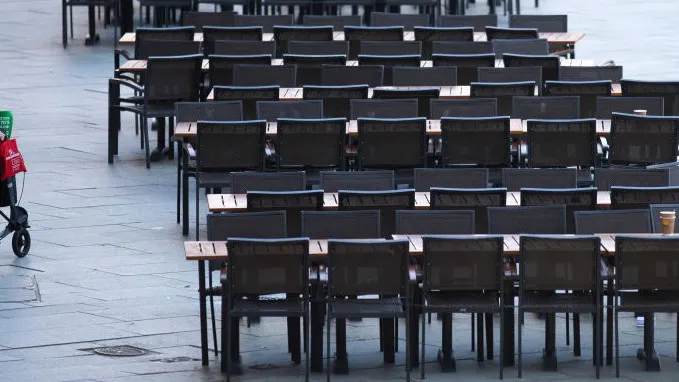Italy has about 60 million residents. Japan has more than 125 million.
Yet the coronavirus COVID-19 has ripped through Italy, with 31,506 confirmed cases and 2,503 deaths, while Japan has just 889 cases and 29 deaths, according to the latest numbers from the Johns Hopkins Center for Systems Science and Engineering.
There are other cases of rapid containment of the virus as well. South Korea, with some 55 million people, somehow cut COVID-19 off before it got rolling. There are 8,413 confirmed cases in the Asian country with 84 deaths, but the spread flattened weeks ago. The death rate is just 0.9% there, compared with nearly 8% in Italy. And Hong Kong, a city of 8 million, has seen low numbers as well: 181 cases and just four deaths — even though it shares a border with China.
Currently, the number of new confirmed cases in the U.S. is 6,519 cases in the U.S., with 115 deaths. But the number of cases is doubling every four days, according to ourworldindata.com, which puts America on a similar arc to Italy.
So what worked in South Korea and Japan and Hong Kong, and could it work here in the U.S.?
Some experts put the stunning differences down to testing. “South Korea has been conducting around 12,000-15,000 tests every day, and has the capacity to do 20,000 daily,” Time reported. “While it is hard to get accurate estimates, the CDC reports that only around 25,000 tests have been conducted in total nationwide by CDC or public health labs in the U.S. — compare this with the roughly 250,000 tests that South Korea has done to date.”
But testing only confirms cases (although those who test positive do then know to isolate, and others with whom they have come in contact also know to get tested). That can’t account for the striking differences in the spread.
Hong Kong-based journalist Rosalind Adams says the city’s swift and severe response may have nipped the spread in the bud. “Almost immediately, the number of people on the street and on public transportation dwindled, as people kept themselves at home to avoid exposure,” Adams wrote in a piece for Buzzfeed. “Within days, the government directed civil servants to work from home, and private employers largely followed suit.”
And Adams said city residents took the virus seriously, self-isolating even without a government directive. “People understood their responsibility to keep themselves and others safe,” she wrote. “Sanitizer, rubbing alcohol, and face masks flew off the shelves. Other countries advised residents to wear a mask only when sick, but it became impolite not to wear one in Hong Kong.”
There are other factors at play. Italy has the second-oldest population in the word, after Japan, and while healthy younger people can quickly recover from the virus, the elderly are hit hard. Societal norms play a role, too: In Italy, the young and the old interact daily, which could be why the rates of infection and death are so high, according to a paper published on the Open Science Framework by researchers at the University of Oxford.
“It is becoming clear that the pandemic’s progression and impact may be strongly related to the demographic composition of the population, specifically population age structure,” the researchers wrote.
But Japan, too, has much interaction between the generations, so why was Italy hit so much harder?
It doesn’t appear to be testing, despite what the mainstream media in the U.S. say. Japan has not conducted extensive testing for COVID-19 on its citizens. South Korea has done nearly 5,600 tests per million residents — third most in the world, according to ourworldindata.com — while Japan has done just 130 per million, putting the country in 21st place. Italy, meanwhile, is sixth at roughly 2,500 per million, while Hong Kong comes in 14th at about 700 per million.
Another possible factor: The Japanese are known as fastidious and many wear masks and gloves daily in public (both to ward off infections and to deal with pollution). Plus, they practice social distancing in everyday life (along with bows instead of handshakes), so that, too, may be playing a role.
But some experts say it was the Japanese government’s quick recommendation to close schools for at least two months and cancel sports events and concerts that played a large role in reducing the spread of the virus. The U.S. was slower in making that call, and that, the experts say, is leading to a steady increase in COVID-19 cases, at least for now.
One other factor is interesting: In places like South Korea, Japan, Hong Kong (and Singapore, which also cut off the virus’s spread quickly), the central government is strong. What’s more, people there are used to following the directives of their governments. In countries like Italy and the U.S. residents enjoy their freedom and don’t always do exactly what their governments tell them to do.
It’s still early in the U.S. While the upward curve of cases reportedly flattened out weeks ago in Wuhan, China — Ground Zero for COVID-19 — the virus spread has yet to peak in the U.S., and won’t for several weeks. How bad it gets here depends much on how seriously Americans take the situation.
While the U.S. is on a similar arc as Italy right now, it very quickly could become a South Korea or Japan — only time will tell.

.png)
.png)

